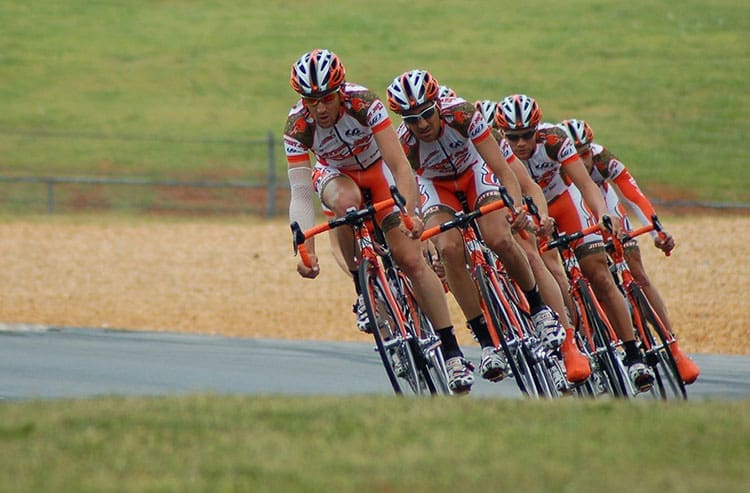Time trial cycling, often described as the ‘race of truth,’ is a unique discipline where riders race against the clock to achieve the best time. It’s a pure test of speed, endurance, and strategy, played out on roads that stretch through beautiful, challenging terrains. The UCI World Championships, a pinnacle event in the cycling calendar, showcases some of the most advanced trial equipment, each designed to slice through the air with minimal resistance.
These bikes are engineering marvels, blending cutting-edge technology with the principles of aerodynamics. Every component, from the frame to the handlebars, is optimized for speed and efficiency. The materials are lightweight yet incredibly strong, allowing for a sturdy, responsive ride. The design process involves meticulous testing and refinement, often in wind tunnels, to ensure every curve and edge reduces wind drag.
The Role of Technology in Time Trial Success
In the realm of professional cycling, where races are won or lost by mere seconds, technology plays a crucial role. Time trial bikes are a perfect example of this, where the slightest aerodynamic advantage can make a significant difference.
Just like a student seeking the perfect resource for payment for essays to enhance their academic performance, cyclists and engineers constantly seek ways to gain an edge over the competition. These bikes are not just about raw power; they are about maximizing efficiency and minimizing effort over each kilometer.
Aerodynamics: The Heart of Time Trial Bikes
Aerodynamics is at the heart of time trial bike design. The shape of the frame, the position of the rider, and even the type of helmet used are all tailored to reduce air resistance. The bikes are designed to be as slender as possible, with features like deep-section wheels and integrated handlebars that cut through the air more effectively.
The rider’s position is also crucial; a more aerodynamic position can significantly reduce drag, but it must be sustainable over the race distance.
Photo by Daniel Llorente on Unsplash
Customization and Comfort
Despite the emphasis on speed, comfort cannot be overlooked. A rider who is uncomfortable is unlikely to perform at their best. Therefore, these bikes are often customized to the specific measurements, ensuring an optimal balance between aerodynamic posture and comfort. This includes adjustments to the saddle, handlebars, and even the shoes and clothing worn by the rider.
The Role of Technology and Data
Modern-time trial bikes are also equipped with advanced technology. Power meters, heart rate monitors, and GPS systems provide real-time data, allowing riders and their teams to make informed decisions about pacing and effort. This technology is similar to the data analytics tools used in various fields, offering insights that can improve performance.
Training and Preparation
Training for a time trial event is as much about strategy as it is about physical preparation. Bikers must learn to pace themselves effectively, conserving energy for the most challenging sections of the course. This requires not just physical endurance but mental resilience, understanding the course, and knowing when to push hard and when to conserve energy.
The UCI, cycling’s governing body, sets strict regulations on bike design to ensure fair competition. This includes limitations on bike weight, frame shape, and size. Despite these regulations, manufacturers continually push the boundaries, innovating within the rules to create the fastest bikes possible.
Environmental Factors
In time-trial cycling, environmental factors like wind, temperature, and road conditions play a significant role. Riders and teams must be adaptable, adjusting their strategy based on these variables. This could mean changing equipment choices or altering the racing line to take advantage of tailwinds or shelter from crosswinds.
As technology advances, we can expect trial bikes to become even more sophisticated over time. This could include new materials for lighter frames, more advanced aerodynamic designs, and even more integrated technology for real-time data analysis.
Preparing for the Race: Beyond the Bike
While the bike is a critical component, successful time trialing also depends on the rider’s preparation and mindset. This includes rigorous training, strategic planning, and mental conditioning. Riders must enter the race with a clear plan and the flexibility to adapt to changing conditions and unexpected challenges.
The Role of Teamwork
In individual time trials, while the rider may be alone on the road, the role of the team is still crucial. From mechanics ensuring the bike is in perfect condition to coaches developing the racing strategy, it takes a well-coordinated team effort to succeed.
Interestingly, there’s a parallel between the precision and preparation in time trial cycling and academic pursuits. Just as cyclists meticulously prepare their bikes and strategies, students seek out the best essay writing service to enhance their academic work. Both realms value precision, expertise, and the pursuit of excellence.
The Psychological Aspect of Time Trialing
In addition to the technological and physical aspects, the psychological component of time trialing cannot be understated. The mental fortitude required to maintain focus, endure physical strain, and execute a race plan is immense.
Just as a student might grapple with the stress of academic deadlines and seek out efficient online services, cyclists in time trials must manage their mental energy meticulously. This involves techniques such as visualization, stress management, and maintaining a positive mindset throughout the race.
Nutrition and Recovery
Another crucial aspect often overlooked is nutrition and recovery. The right diet and recovery protocol can significantly impact a rider’s performance. Nutritionists work closely with cyclists to ensure they fuel their bodies correctly before, during, and after the race. Recovery, including adequate rest and muscle rehabilitation, ensures the rider is at their peak on race day.
Final Thoughts
Time trial biking in the UCI World Championships is a fascinating blend of athleticism, science, and technology. It’s a discipline where every second counts and the pursuit of efficiency and speed is relentless. These bikes are not just modes of transport; they are the result of years of innovation, testing, and refinement.
As we marvel at the speed and grace of these cyclists, it’s worth remembering the intricate science and sheer effort that powers each pedal stroke. In the world of time trial cycling, every detail matters, and the pursuit of perfection is never-ending!
Top Photo by James Thomas on Unsplash




















